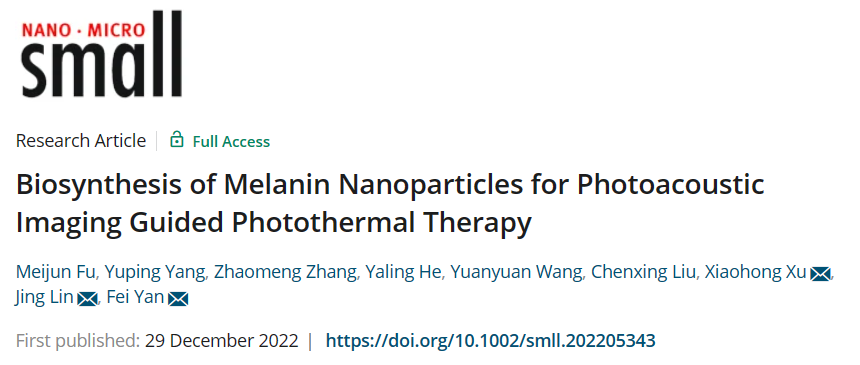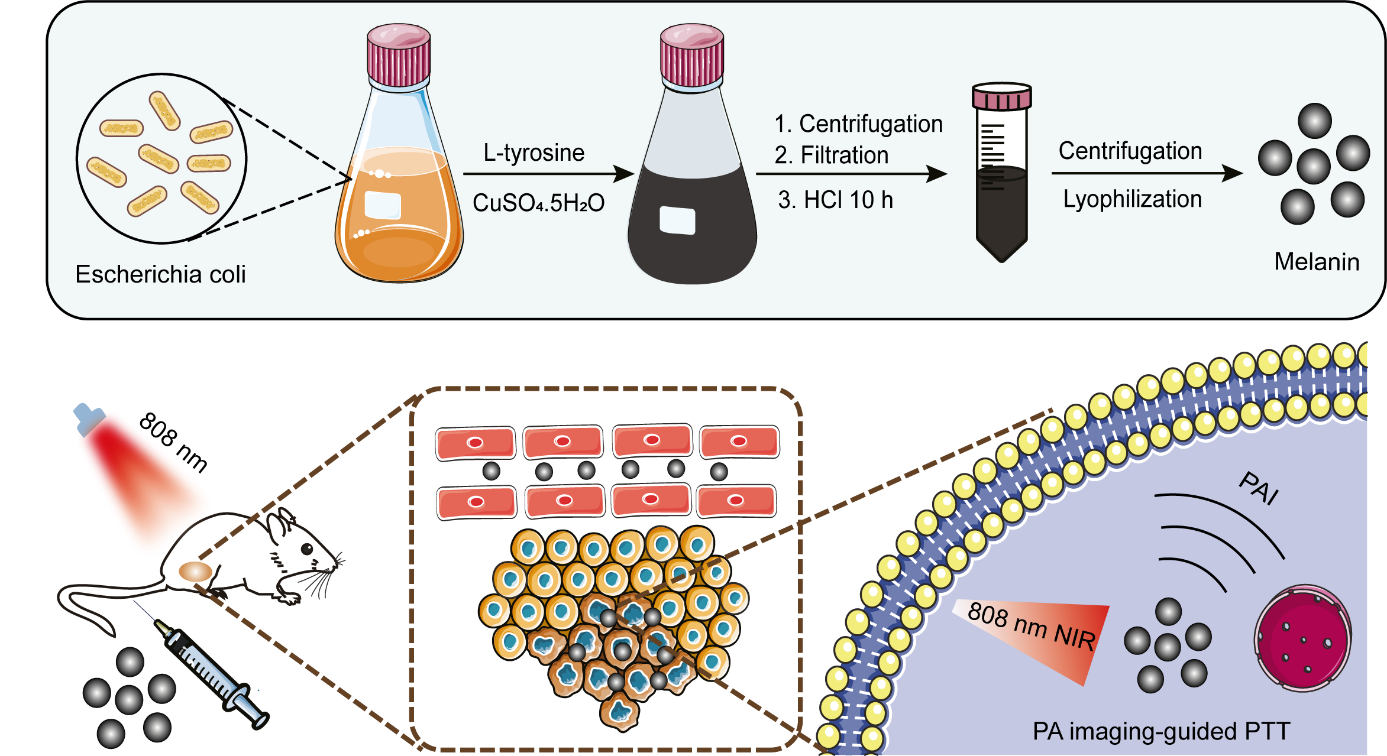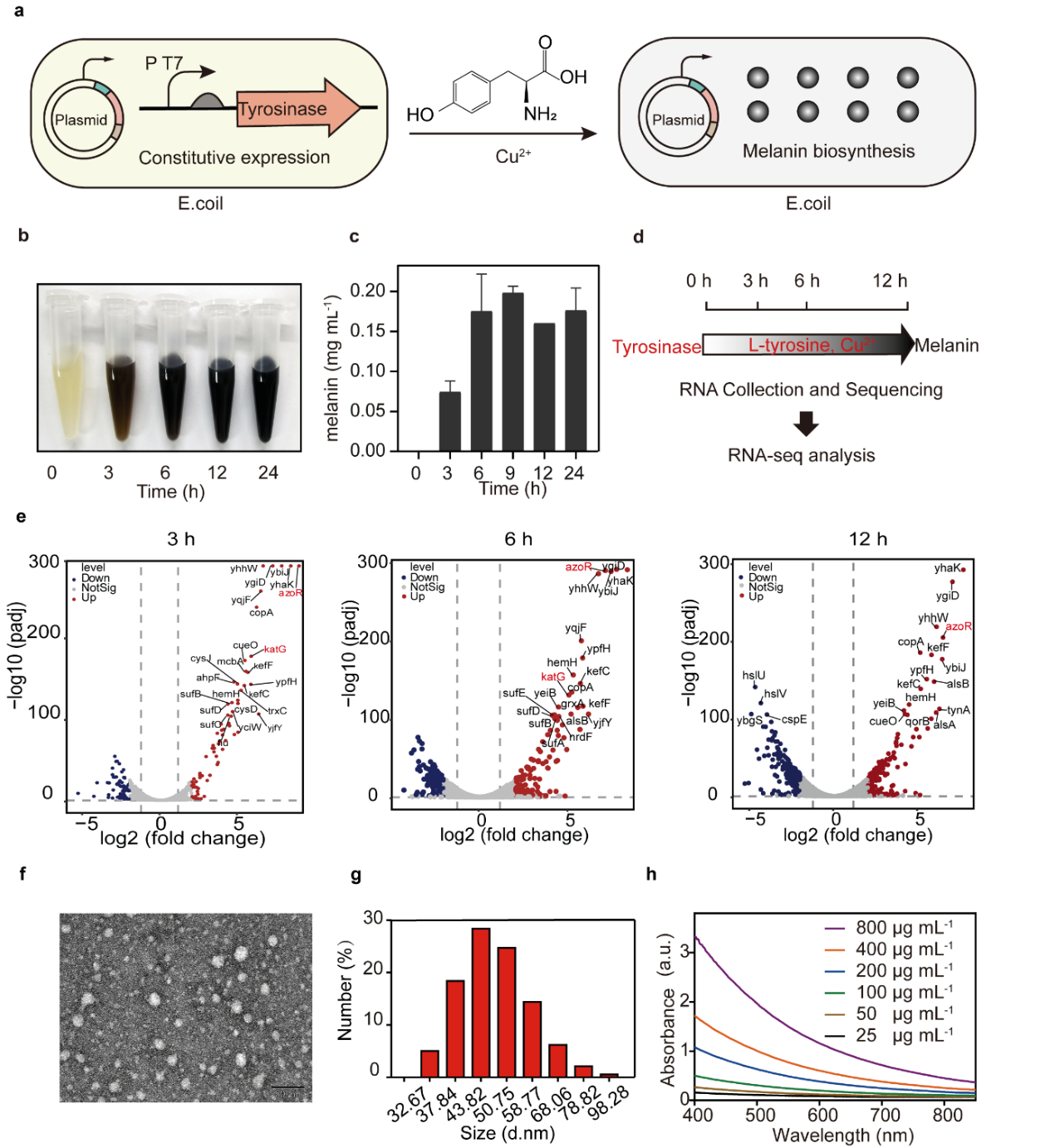
Recently, the latest research achievement of the team of Yan Fei, a researcher of the Institute of Synthetic Biology of Shenzhen Institute of Advanced Technology, Chinese Academy of Sciences, was published on Small, an internationally well-known journal in the field of materials, under the title of “Biosynthesis of Melanin Nanoparticles for Photoacoustic Imaging Guided Photothermal Therapy”.
Shenzhen Institute of Advanced Technology is the first corresponding organization. Yan Fei, a researcher of Shenzhen Institute of Advanced Technology, Lin Jing, a professor of Shenzhen University, and Xu Xiaohong, a chief physician of the Affiliated Hospital of Guangdong Medical University, are the co-corresponding authors of the paper. Fu Meijun, a doctoral candidate of Shenzhen Institute of Advanced Technology, Yang Yuping, a doctoral candidate of Southern Medical University, and Zhang Zhaomeng, a master degree candidate of Hebei Medical University, are the co-first authors of the paper.

Screenshot of the published paper
Link of the paper: https://doi.org/10.1002/smll.202205343
Although photothermal therapy has become a promising cancer treatment strategy, many photothermal therapeutic agents have poor biocompatibility and often involve complex reaction methods and harsh reaction conditions in production and processing. Therefore, the development of photothermal therapeutic agents with good biocompatibility under environmentally friendly conditions is of great research significance. Melanin is a multifunctional pigment, which is widely used in fields such as energy and biomedicine. Melanin is widely distributed in nature, but it is expensive.
At present, melanin on the market is mainly obtained through chemical synthesis or extraction from squid, which poses a significant challenge to the mass production of melanin. Microorganisms can be used as bioreactors for mass production of biomaterials. Compared with chemical synthesis methods, biosynthesis methods have the following advantages: mild reaction conditions, friendly environment, and good biocompatibility.
In this project study, the research team first expressed tyrosinase heterologously in Escherichia coli. Tyrosinase could catalyze the hydroxylation of the substrate L-tyrosine to 3,4-dihydroxyphenylalanine (L-DOPA), which was further oxidized to produce dopaquinone, which polymerized to produce melanin nanoparticles. Subsequently, the research team characterized the structure of the biosynthetic melanin nanoparticles and evaluated their photothermal properties and biosafety. The experimental results suggested that the biosynthetic melanin nanoparticles have good photothermal stability, high photothermal conversion efficiency, and good biocompatibility. In addition, the findings showed that the biosynthetic melanin nanoparticles have excellent photoacoustic imaging performance and can be used as an environmentally friendly photothermal therapeutic agent for photoacoustic imaging guided photothermal therapy, which has important research value and application prospect.

Figure 1. Schematic diagram of biosynthetic melanin nanoparticles used in photoacoustic imaging guided photothermal therapy of tumors

Figure 2. Biosynthesis and characterization of melanin nanoparticles. (a) Schematic diagram of biosynthesis of melanin nanoparticles in Escherichia coli, (b) Representative images at different time points during biosynthesis of melanin, (c) Quantitative analysis of melanin yield at different time points, (d) RNA-seq library construction and sequencing analysis of samples at different time points (0, 3 h, 6 h, 12 h) during biosynthesis of melanin nanoparticles, (e) Volcano plots expressing significantly altered genes, (f) TEM image of melanin nanoparticles (Scale bar = 50 nm), (g) The hydration kinetic diameter of melanin nanoparticles measured by DLS, (h) UV-vis absorption spectra of biosynthetic melanin nanoparticles with different concentrations.
This research work was supported by the National Key Research and Development Program of the Ministry of Science and Technology, the National Natural Science Foundation of China, and programs of Shenzhen Science and Technology Innovation Committee, Shenzhen Institute of Synthetic Biology, etc.